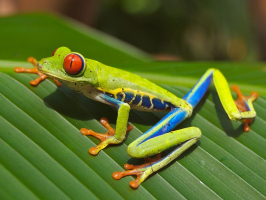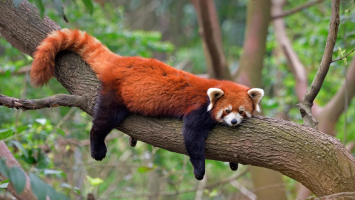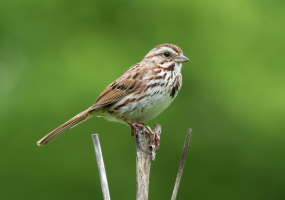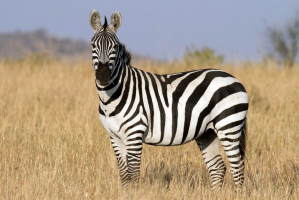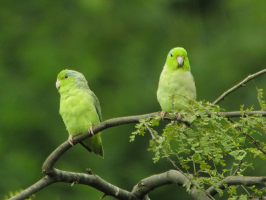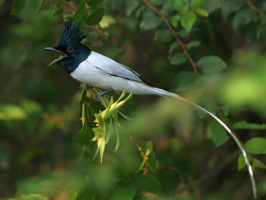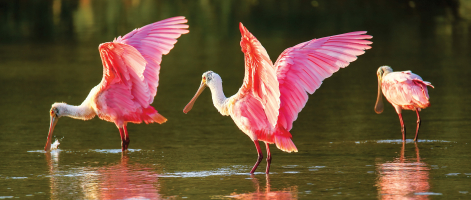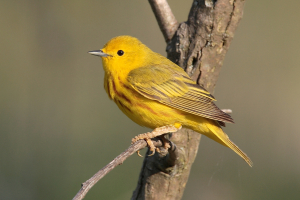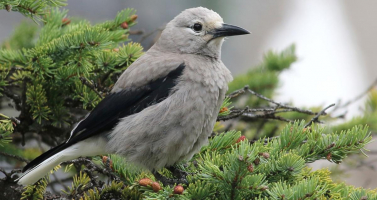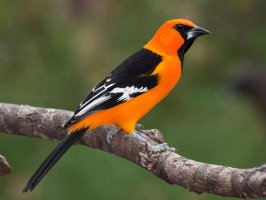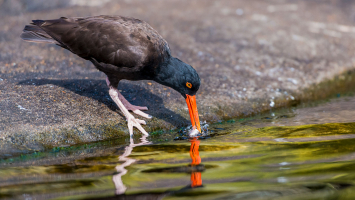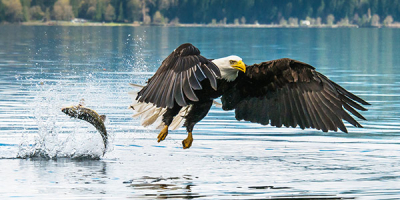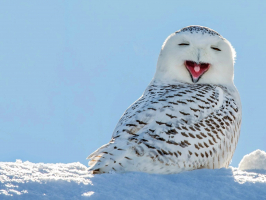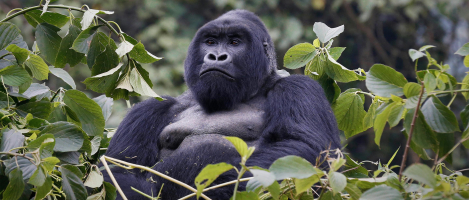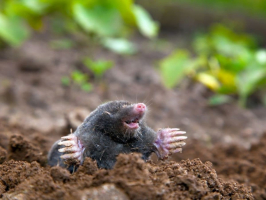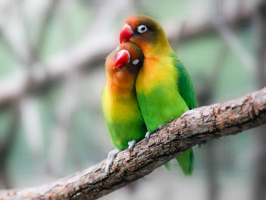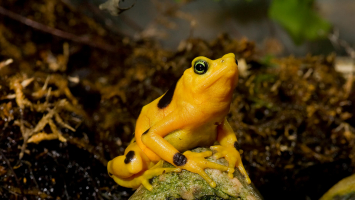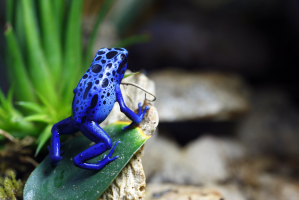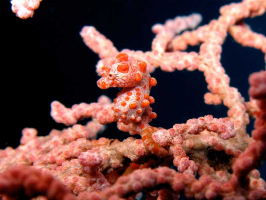Top 10 World's Beautiful Brown Animals
Brown is often seen as solid, much like the earth, and it's a color often associated with resilience, dependability, security, and safety. Feelings of ... read more...loneliness, sadness, and isolation. In large quantities, it can seem vast, stark, and empty, like an enormous desert devoid of life. In the animal kingdom, brown is certainly one of the more common colors an animal can come in. Brown helps a wild animal camouflage itself as it moves along the ground or the trunks of trees. Below is a list of the most beautiful brown animals in the world, let's find out!
-
The Cedar Waxwing (Bombycilla cedrorum) is a member of the family Bombycillidae or the waxwing family of passerine birds. Cedar waxwing is listed as the least concern on the IUCN Red List. The two common calls of these birds include very high-pitched whistles and buzzy trills about a half second long often represented as see or sree. Its call can also be described as "high, thin, whistles". They call often, especially in flight.
The cedar waxwing is distinguished from other brown-feathered birds by the silky sheen on its brown feathers. The waxwing is a medium-sized bird that measures six to seven inches long and has a wingspan of nine to twelve inches. It has dark brown wings with black and white striped patterns, a crest, a black mask, and vivid red wax-like drips on its secondary flight feathers. It can be found from Canada to northwest South America, and there is no concern about the condition of its population. It consumes both fruit and insects. The Bohemian waxwing, its larger cousin, resides across northern Eurasia and Canada.
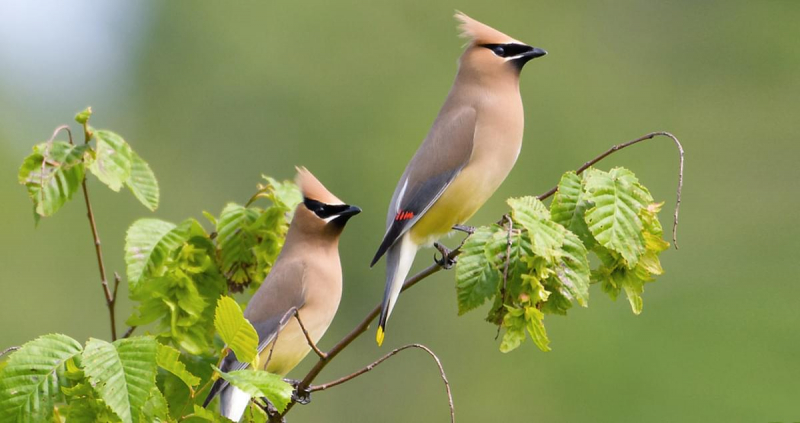
All About Birds 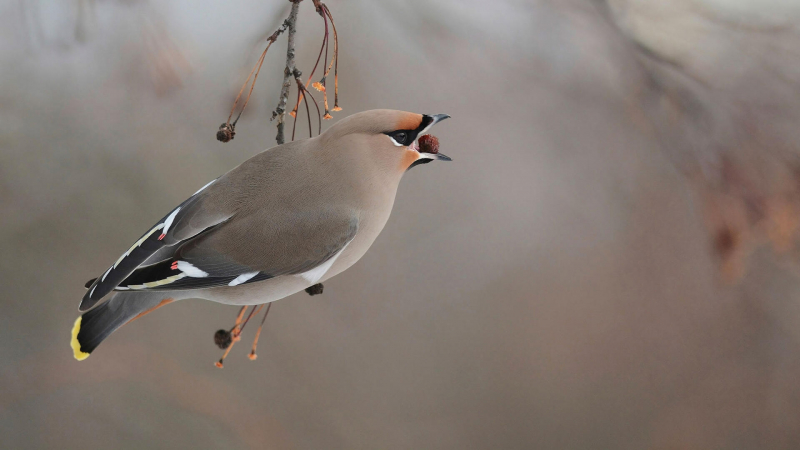
National Audubon Society -
The Western Banded Gecko (Coleonyx variegatus) is a species of lizard in the family Eublepharidae. The species is native to the southwestern United States and adjacent northwestern Mexico. The creosote bush and sagebrush desert, pinyon-juniper forest, catclaw-cedar-grama grass associations, and chaparral environments are just a few of the diverse habitats that the western banded gecko may be found in. Its elevational range reaches a maximum of 1,520 m (4,990 ft) above sea level.
Five subspecies are recognized. The gecko's body is light brown and striped with darker brown bands and spots. The smooth, shiny appearance of the body is due to the microscopic size of the reptile's scales. It also has eyelids, which distinguishes it from other geckos. The western banded gecko is about four to six inches long, including its tail. It is a nocturnal lizard that emerges at night to hunt for insects and other small arthropods. Unusually, it also consumes young scorpions, but in turn, snakes and carnivores like coyotes eat it.
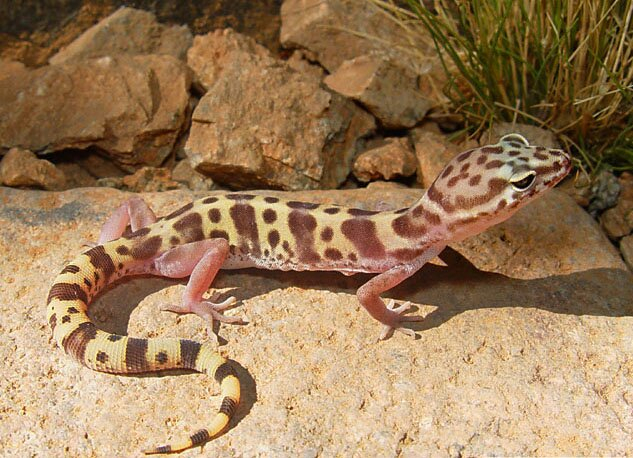
Wikipedia 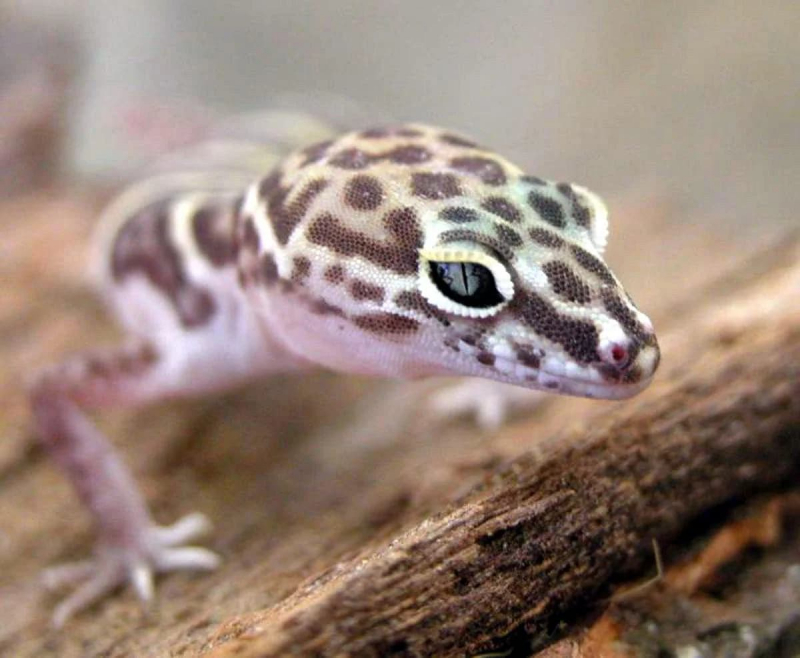
Reptiles' Cove -
The White-Tailed Deer (Odocoileus virginianus), also known as the whitetail or Virginia deer, is a medium-sized deer native to North America, Central America, and South America as far south as Peru and Bolivia. It has also been introduced to New Zealand, all the Greater Antilles in the Caribbean (Cuba, Jamaica, Hispaniola, and Puerto Rico), and some countries in Europe, such as the Czech Republic, Finland, France, Germany, Romania, and Serbia. It is the wild ungulate with the greatest geographic range in the Americas.
In the spring and summer, the deer's coat is reddish-brown, and in the fall and winter, it is grey-brown. The distinctive white underside of the deer's tail makes it easy to identify. When scared, it lifts its tail to signal the predator that it has been seen. The length of the snout and the color of the coat can be used to determine a deer's age, with older deer often having longer snouts and grayer coats. They are also known for their beautiful antlers, which they shed and regrow every year.
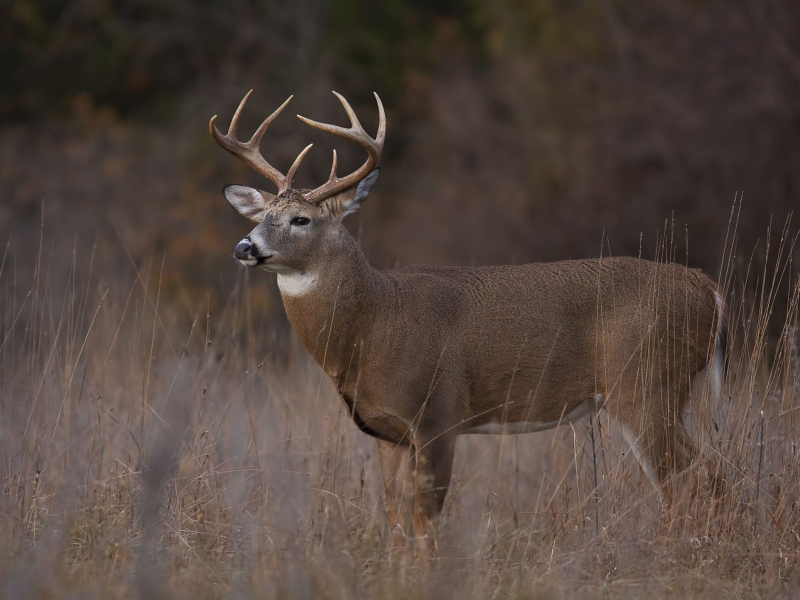
ThoughtCo 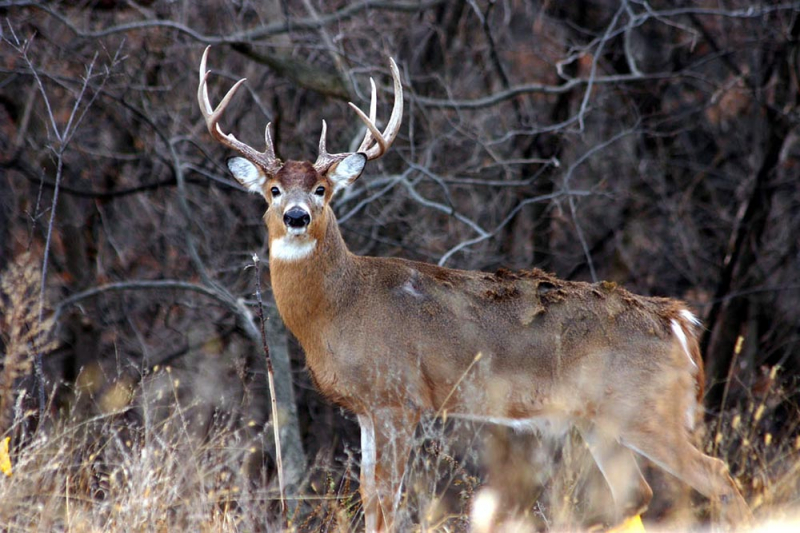
New Hampshire PBS -
The Eurasian Hoopoe (Upupa epops) is the most widespread species of the genus Upupa. It is indigenous to northern Africa, Asia, and Europe. In the northern portion of its range, it migrates. It spends the majority of its time on the ground, searching for insects and grubs. In an already-existing cavity, a clutch of seven or eight eggs is placed. The female lays the eggs, which hatch asynchronously. Hoopoes from Africa and Madagascar are regarded by some ornithologists as subspecies of the Eurasian hoopoe.
The Eurasian hoopoe is a medium-sized bird with a length of 25–32 cm and a wingspan of 44–48 cm. It measures 46-89 grams. The long, thin, tapering bill of this species, which is black with a fawn base, is very unique. When exploring inside the dirt, the bill can be opened thanks to the strengthened head muscles. The hoopoe has broad, rounded wings that can fly strongly; the northern migratory subspecies have broader wings. The hoopoe's wings partly close at the end of each beat or brief sequence of beats, giving it a distinctive undulating flight that resembles that of a large butterfly. After the breeding season, adults may start their molt and carry it out until they move for the winter.
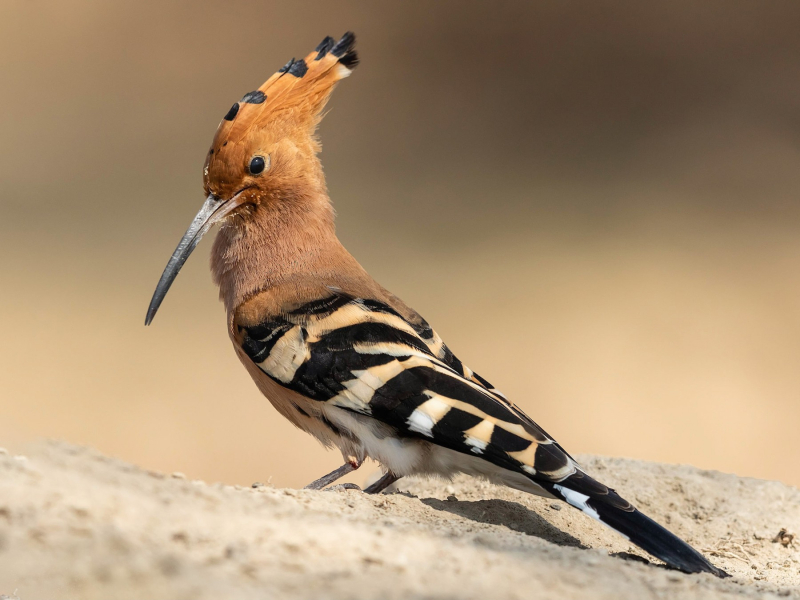
eBird 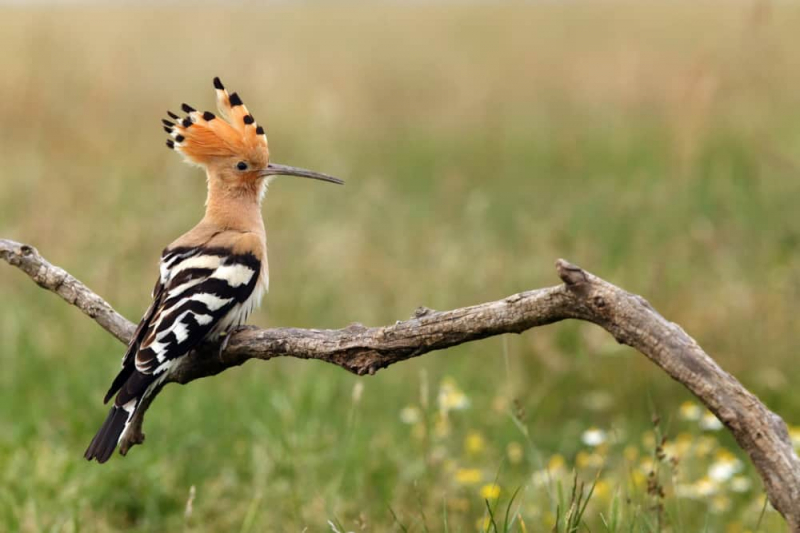
Kidadl -
The Cougar (Puma concolor) is a large cat native to the Americas. Its range spans from the Canadian Yukon to the southern Andes in South America and is the most widespread of any large wild terrestrial mammal in the Western Hemisphere. It is an adaptable, generalist species, occurring in most American habitat types. Due to its wide range, it has many names, including puma, mountain lion, catamount, and panther.
This cat has a light brown coat, yet the muzzle and the undersides may be somewhat white. Its paws are excessively huge compared to its body, while its head is little. The cat can leap onto the back of its prey, which is frequently a deer, because of the muscles in its hind legs, which are longer than its forelegs. The length and weight of a cougar are 3.5 to 6.5 feet and 150 to 230 pounds, respectively. The cougar is a predator that ambushes its prey and hunts a range of prey. It hunts smaller animals like rodents in addition to ungulates, notably deer, which are its main food sources. Although it also thrives in open regions, it favors settings with plenty of rocky outcrops and underbrush for stalking.
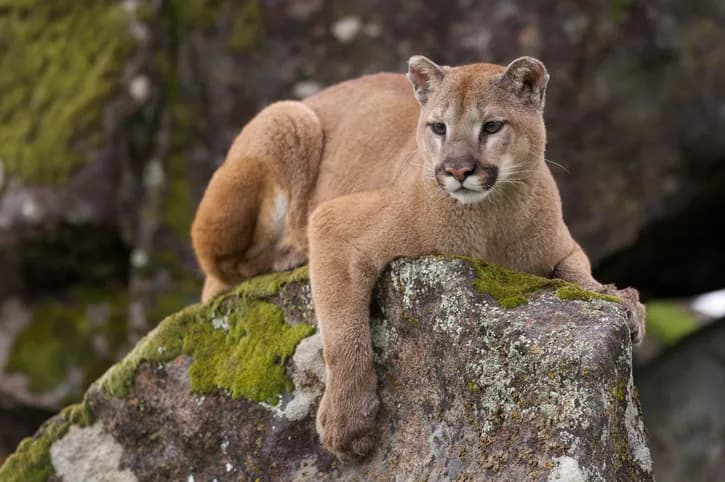
Audacy 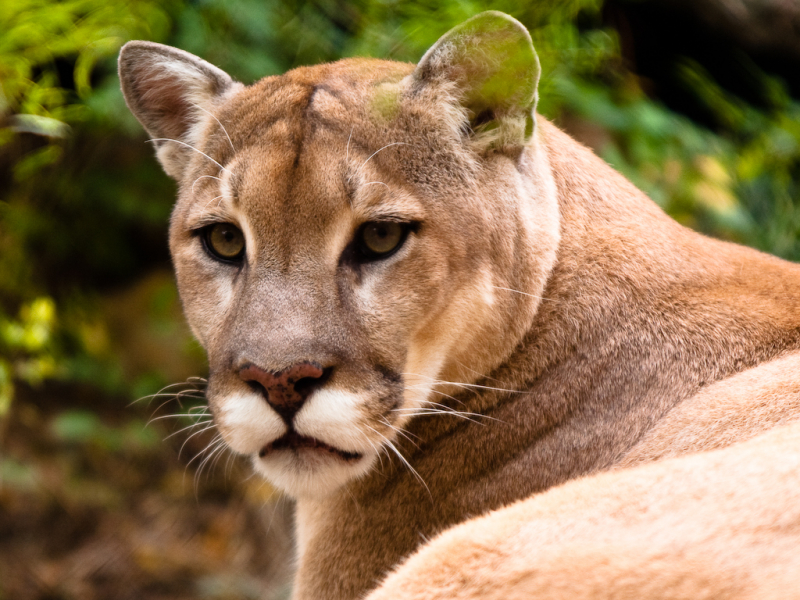
Wikimedia Commons -
Acrantophis dumerili, commonly known as Dumeril's Boa, is a non-venomous boa species found in Madagascar. No subspecies are currently recognized. A. dumerili adults typically reach a length of 6.5 feet (including the tail), with a maximum measurement of 8 feet, 6 inches being recorded (259 cm). While females often have bigger overall sizes, males typically have longer, skinnier tails. A gray-brown base hue and darker patches make up the color pattern, which works well as a camouflage against the leaf litter on the forest floor of their natural habitat.
The diet of A. dumerili consists of small animals, such as birds, lizards, and small mammals, including juvenile lemurs. It is also known to prey on other snakes. The species A. dumerili is classified as Least Concern (LC) on the IUCN Red List. This means that a population reduction of at least 20% has been observed, estimated, inferred, or suspected over the last 10 years or three generations, whichever is the longer, based on a decline in area of occupancy, the extent of occurrence, and/or quality of habitat, and based on actual or potential levels of exploitation.
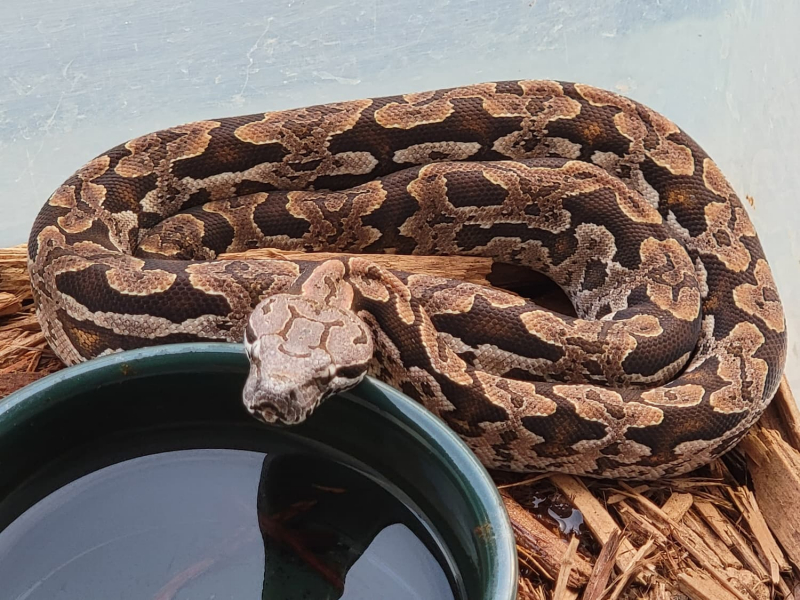
MorphMarket 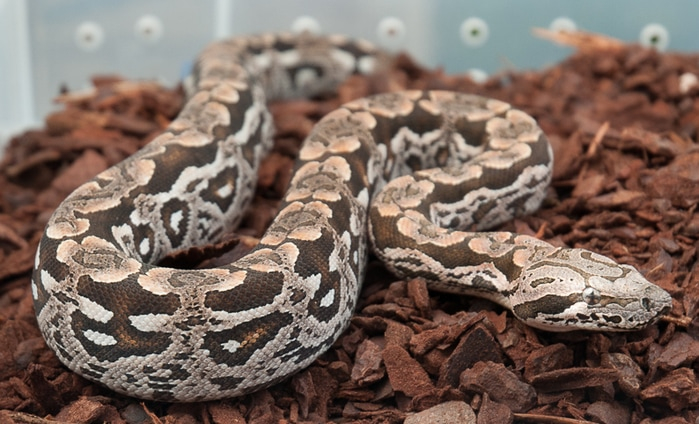
Reptiles Magazine -
The largest brown bear subspecies is the Kodiak Bear. It is four feet four inches tall at the shoulder and measures eight feet from nose to tail. It is only slightly smaller than the polar bear. It may weigh up to 1320 pounds. Only found in the Kodiak Archipelago, this bear's population appears to be growing.
Like other brown bears, the Kodiak has tiny eyes in a big, rounded head on top of somewhat short ears. It has robust but short for the body limbs, and the deadly claws on its front paws are fixed. Even though bears typically have brown fur, some have been observed with blond or black fur. Many people are surprised to learn that brown bears are largely herbivorous and eat grasses, roots, berries, nuts, and bulbs and turn to salmon when they start to run in May. Interestingly, the bears seem to be so fond of elderberries that when they ripen at the same time the salmon are running, they’ll prefer the berries.
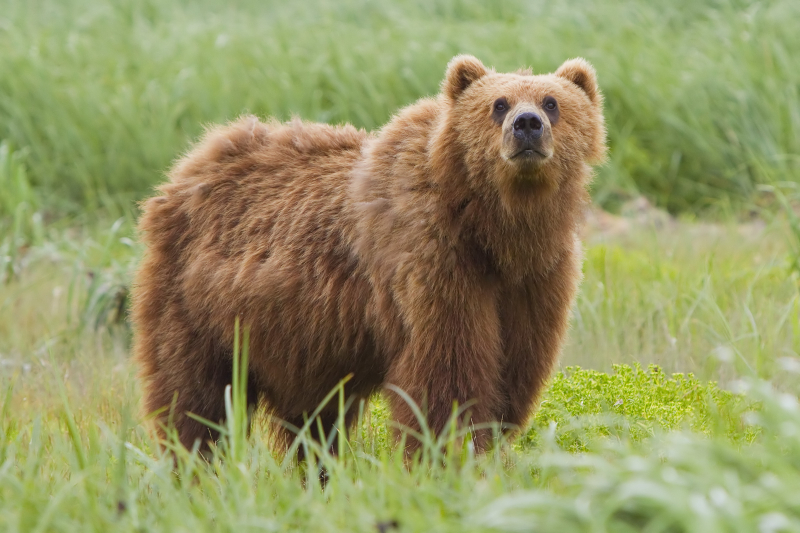
Wikipedia 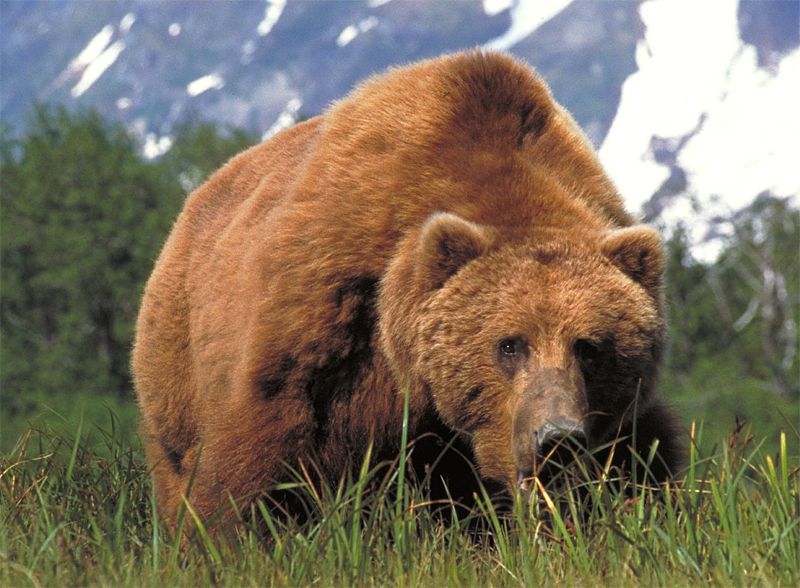
North American Bear Center -
The Carolina Wren (Thryothorus ludovicianus) is a common species of wren that is a resident in the eastern half of the United States of America, the extreme south of Ontario, Canada, and the extreme northeast of Mexico. While favorable climatic circumstances cause their breeding area to be extended further north, harsh winters limit their range's northern boundaries. Their preferred habitat is deep cover found in forests, on the margins of farms, and in suburbia. South Carolina's official bird is a wren.
The rump and upper tail coverts of T. l. ludovicianus have a richer, more chestnut-colored tint than the crown. With numerous tiny white spots on the lower primary coverts, the shoulders and greater coverts are a rich brown color. The black above and below the white supercilious streak's tiny border reaches above and beyond the animal's shoulders. The ear coverts have gray and grayish-black speckling. It has a grey chin and throat, which turn buff on its chest, flank, and belly, the latter two of which are a warmer color. A buffy whitish tint is present on the underwing coverts. It has a reddish-brown iris, a lemon-colored upper mandible, and a paler lower mandible.
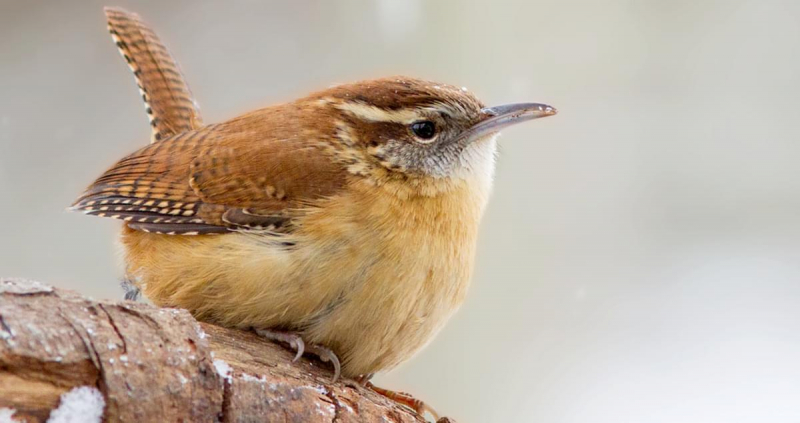
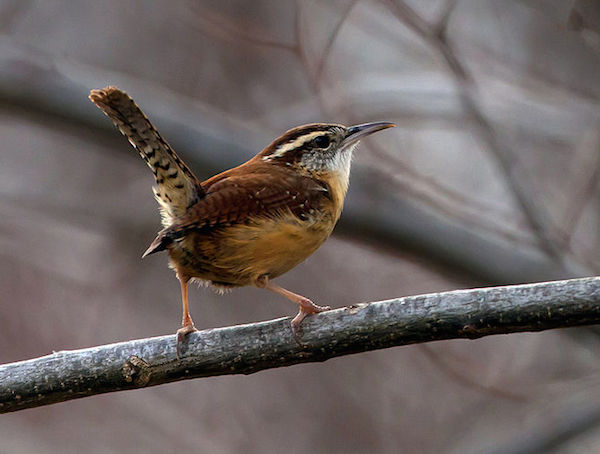
-
Abisara fylla, the Dark Judy, is a small but striking butterfly found in India that belongs to the Punches and Judies, which is the family Riodinidae. a male's gorgeous, dark brown upper body. A subterminal transverse, very inconspicuous, the pale fascia that ends anteriorly in a white dot and two subapical white spots are present on the forewing. This fascia is curved slightly inwards at each end.
Similar to the male, the female has a more prominent but very extensively angulated outwards in the middle hindwing termen. Upperside: The ground color is a paler, duller brown; the forewing's oblique band is pure white rather than cream-colored; the hindwing's subterminal series has six rather than seven black spots, the spots being larger and more distinct than in the male. Ground color on the underside is paler than on the upperside; markings are similar; on the hindwing, there is no sign of a subbasal band, and the middle two spots in the subterminal series are more or less obsolete. The antennae, head, thorax, and abdomen all match the color of the wings, with the exception of a white point at the tip of each antenna. Below the antennae, the palpi, thorax, and abdomen are paler and marked with white.
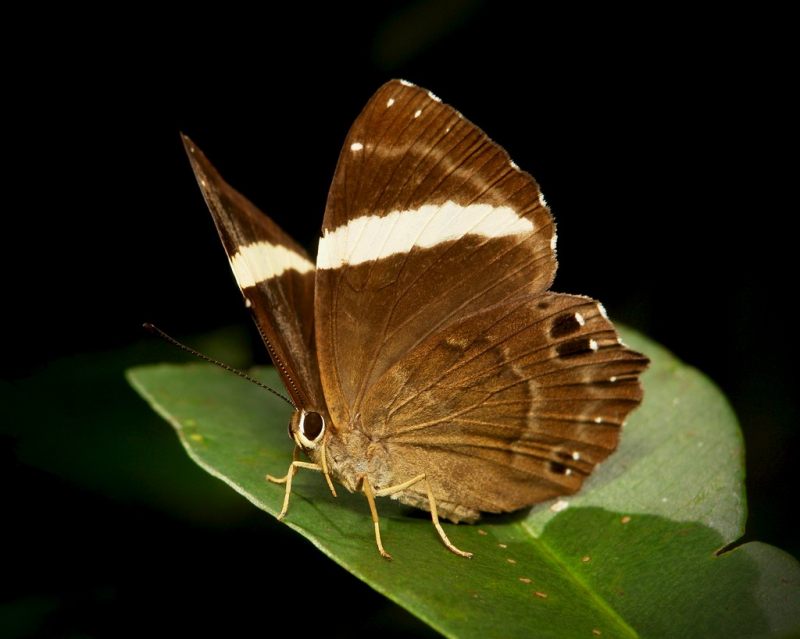
Flickr 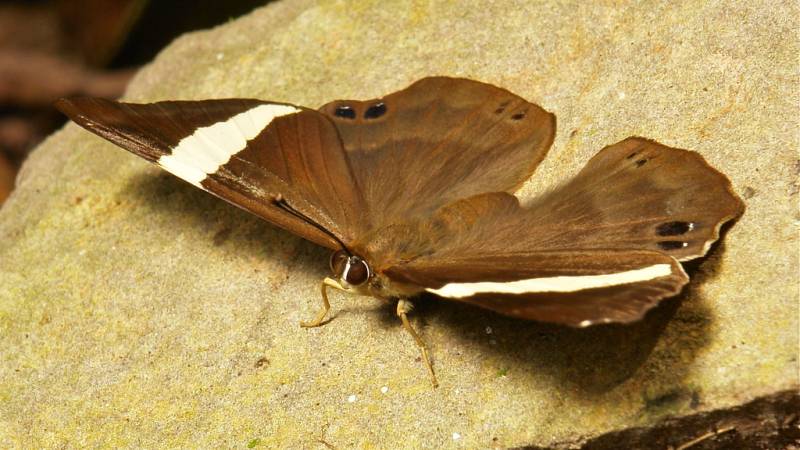
Flickr -
The Golden Eagle is a North American Bird with a length of 33 to 38 inches and weighs 2.7 to 6.8 kg. It can live for around 30 years and is found in grasslands, highlands, and steppes in North America and Mexico. It has beautiful golden-brown feathers on its head and is dark brown in color. Its tail is also gray, and its inner wings are round and gray.
It has an 80 mph top speed. The carnivorous golden eagle consumes carrion, rabbits, marmots, birds, squirrels, fish, and a variety of other large invertebrates. Because of its hunting prowess, the golden eagle is regarded with great mystic reverence in some ancient, tribal cultures. This bird is considered the national bird of Mexico and is cunning enough to kill a man.
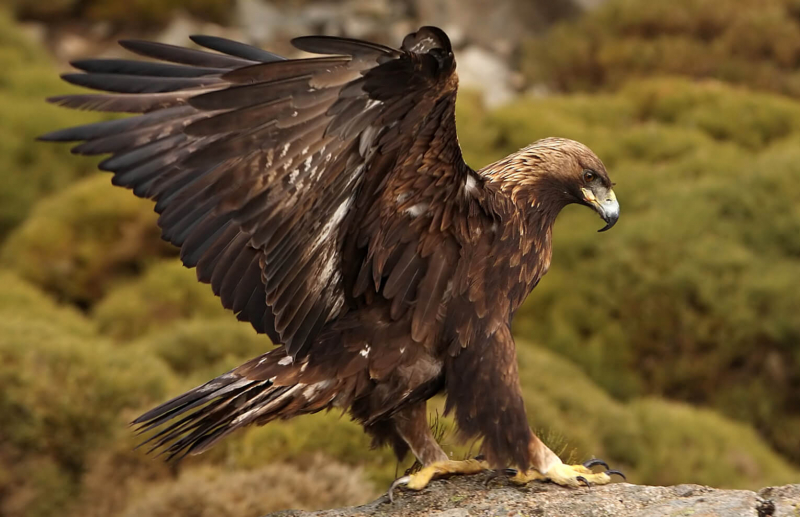
Wikipedia 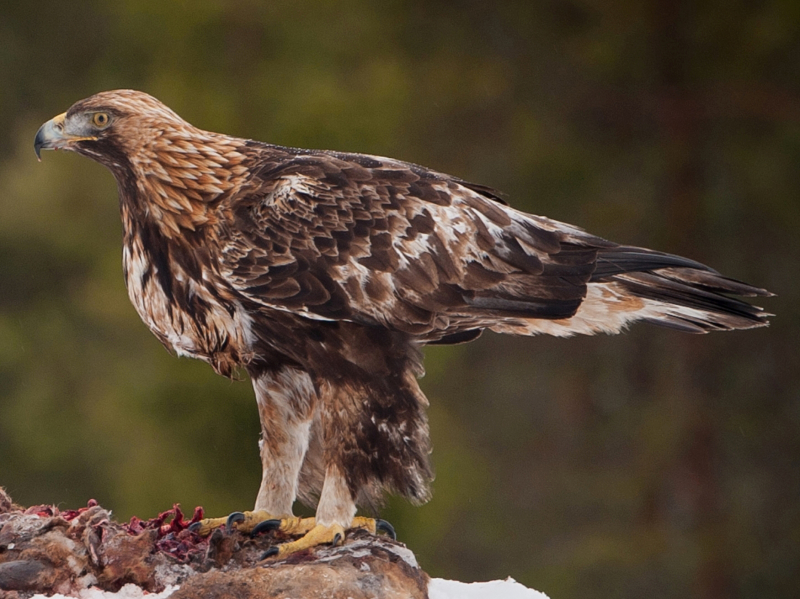
American Bird Conservancy












